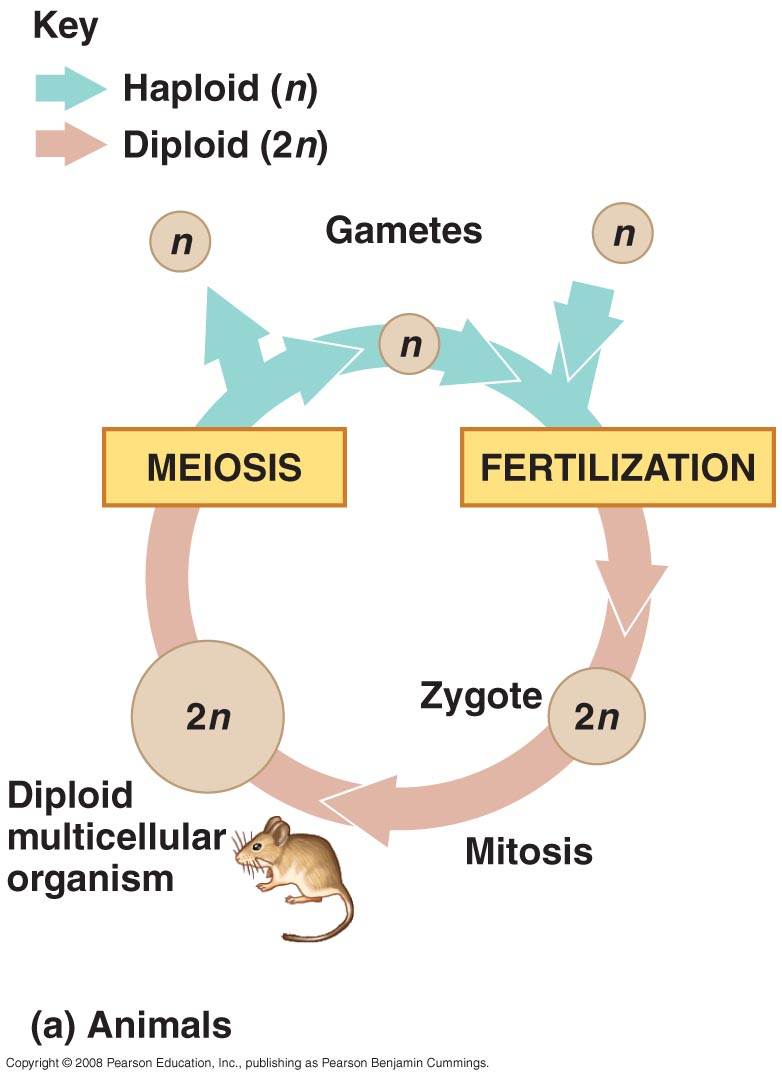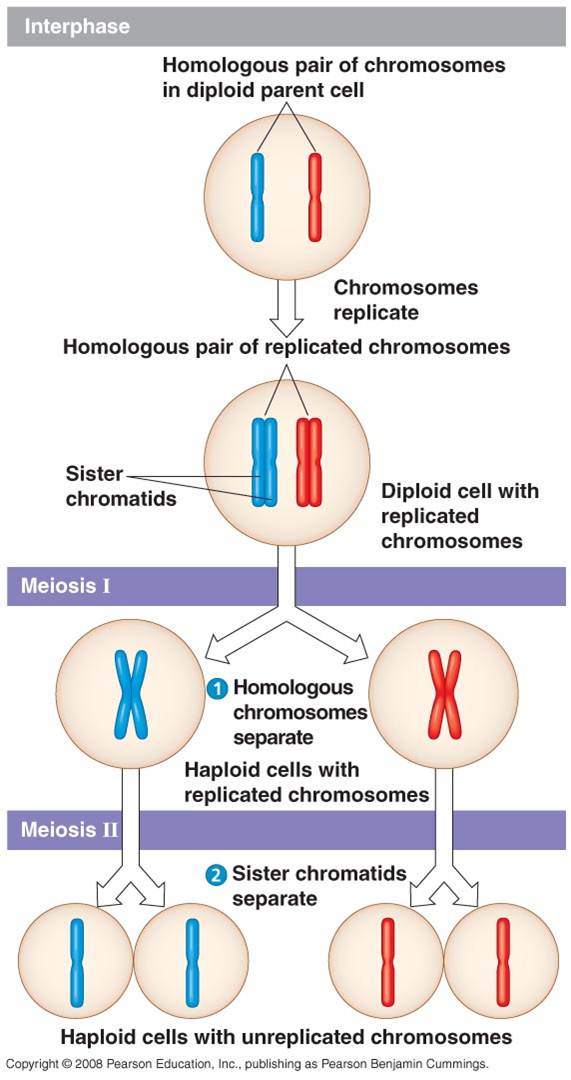Cards In This Set
| Front | Back |
|
1) Mendel used the scientific approach to identify two ____________________
2) What law governs Mendelian inheritance3) Yes or no, are inheritance patterns more complex than predicted by Mendelian genetics?4) Do most human traits and diseases follow Mendelian patterns of inheritance? |
1) laws of inheritance2) laws of probability3) Yes4) Yes
|
|
In diploid animals when in the reproductive cycle are there haploid and diploid stages???
|
 Look at it |
|
Draw meiosis, please and thank you!!
|
 Look at it |
|
What idea in genetics was popular during mendel's time???
what idea did Mendel develop and through what experiment!! |
•The blending idea was common at the time of Mendel - idea that genetic material from the two
parents blends together (like blue and yellow paint blend to make green
•The “particulate” hypothesis is the idea that parents pass on discrete heritable units (genes) • Mendel documented a particulate mechanism through his experiments with garden peas |
|
What organisms did Mendel use in his famous and very epic experiment??? huh which organism? tell me, right now!!!!
|
Peas :)
|
|
In Mendel's famous, epic experiment, the organism that he choose had certain advantages, what were these advantages??
|
1) easy to grow2) many varieties with well described characteristics(such as color)3) mating of plants can be controlled
|
|
What was Mendel's experimental design???
|
 •Mendel chose to track only those characters that varied in an “either or” manner • •He also used varieties that were “true-breeding” (plants that produce offspring of the same variety when they self-pollinate) |
|
Define the following!!!! Trust me you will appreciate this!!
hybridization P generation F1 generation F2 generation |
Mating two contrasting, true-breeding
varieties The
true-breeding parents The
hybrid offspring of the P generation When
F1 individuals self-pollinate they produce this generation
|
|
So, what did Mendel actually do in this epically famous experiment???
|
 1) crossed parents that differed in obvious characters 2) one parent's character had disappeared 3) the character reappeared in the next generation |
|
What did Mendel conclude from this experiment
what did he name the traits? heritable factors are now called? |
•Mendel
reasoned that only the purple flower factor was affecting flower color in the F1 hybrids
• Mendel called the purple flower color a dominant trait and white flower color a recessive trait gene |
|
How did Mendel figure all of this amazing shit out???
|
He simple counted, yea he did the thing you learn in elementary school #pow
|
|
What is the the law of segregation?
|
Members of a pair of homologous chromosomes separate during the formation of gametes and are distributed to different gametes so that every gamete receives only one member of the pair
|
|
What ratio did Mendel observe in the F2 offspring??
|
3:1, he later went onto explain this ratio
|
|
Definition time!!
homozygous heterozygous true-breeding |
Having two identical alleles at corresponding chromosomal loci; "these two fruit flies are homozygous for red eye color"
All animals have two gene copies, one from the mother and one from the father. If both copies are different, then the individual is said to be heterozygous for that gene. term used to describe organisms that produce offspring identicle to themselves if allowed to self pollinate; homozygotes are true-breeding and heterozygotes are not |
|
Genetic
information is _____, doesn’t blend
|
Genetic
information is particulate, doesn’t blend
|



